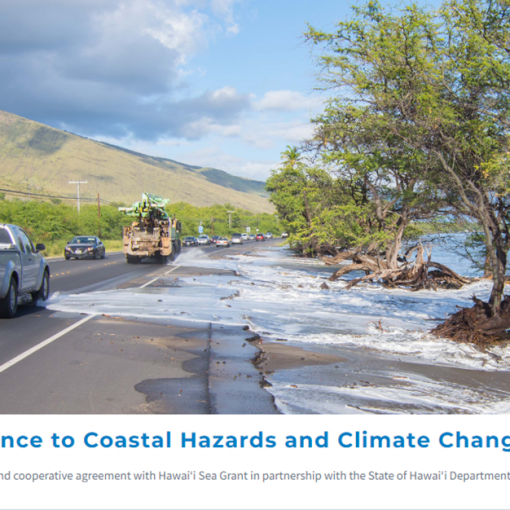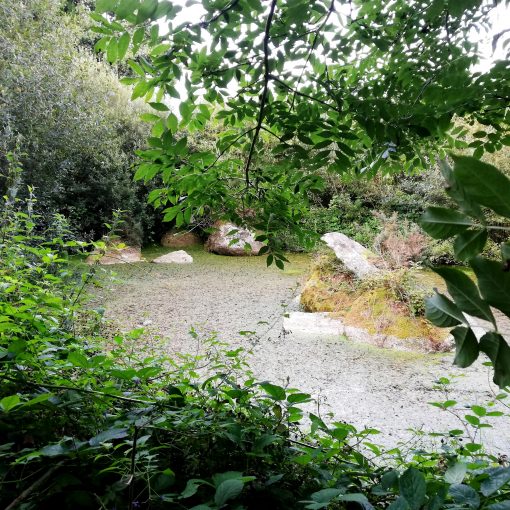10th March



As much of the country shivers with below freezing temperatures, in Cornwall we are getting a much needed deluge. Already the grass verges look fresher, but it is not enough …
Drought (again)
Back in December, in a careless moment, I wrongly reported that our local water company had lifted the hosepipe ban. With the main reservoir still only at 50% capacity, it now transpires (seen on Spotlight TV) that the operations team at SW Water are facing up to the fact that Cornwall needs another source of water and the obvious one will be de-salination.
What is this? Where does it happen and is it too costly, too damaging? What do we know?
Converting sea water to drinking quality requires an extraction of what is dissolved in the water e.g. elements, ions, and molecules. The concentration in normal sea water is 35 grammes of normal salt (sodium chloride) per Kg of water. Some famous locations, such as the Dead Sea and the Great Salt Lake, have a greater intensity of sodium plus magnesium & other dissolved constituents.
There is no doubt that this subject is quite complex. All of the really good sources are based in America. I started with the Water Encylopedia, which is what it sounds, an alphabetical list of water topics. Here they begin by describing the way brine occurs naturally:-
http://www.waterencyclopedia.com/Bi-Ca/Brines-Natural.html
Although the evolution of brines from sea water in sediments and sedimentary rocks is complex and not completely understood, it appears that several processes may be involved:
- Concentration of dissolved constituents through evaporation;
- Retention of dissolved materials through membrane filtration by clay and clay-like minerals;
- Deposition of solids such as halite, dolomite, and anhydrite from the waters;
- Solution of other minerals from adjacent sediment or rock;
- Exchange of cations (positively charged ions) between water and solids;
- Bacterial and other organic processes; and
- Other chemical processes.
In the list above, number 2 provides us with a model for desalination, using a membrane filtration technique called ‘reverse osmosis’ or RO. There is an alternative, using heat, but this is the most common approach to removing brine.


The expert for SW Water on TV referred to the long history of desalination in the Scilly Isles. I have always loved the Scillies and held a small hope that their phone and office systems might be more user-friendly than on the mainland. Yes, the lady who answered the phone was friendly, but she had no inkling of anyone who could talk about this topic. Therefore, of course it was back to Google where I discovered that the company responsible, answering to SW Water, is based in East Midlands and called Kirton –
https://www.kirton.co.uk/work/desalination-plant-for-isles-of-scilly/#
I am telling you right away, this quote is only for the more technical of readers, but their system does use RO and has aimed for the lowest possible energy cost.
| During recent years the existing desalination system became beyond economic repair and as part of a major refurbishment scheme including new bore wells and new purpose engineered building, Kirton secured the contract to replace this with a larger and more efficient fully automatic system. The system was installed and commissioned in 2013 and today the permeate quality continues to comfortably meet specification requirements. It comprises of 2 x 200m³/day reverse-osmosis trains, preceded by a common multi-media and cartridge filtration pre-treatment system. The system utilises pressure exchanger technology to achieve the lowest possible energy cost per cubic metre. The system features full SCADA (Supervisory Control and Data Acquisition) with remote access and is predominately housed in purpose-built containers to provide low cost yet durable housing for the plant components. Telemetry is provided, together with email alert to alert the Operators on the need for attention to the system.. |
What I like about the report above is that it begins to make the option seem more real. How many towns or villages will need to have these purpose-built containers? How will the clean water then be stored and introduced into the normal mains network?
A short piece in Wikipedia considers how much energy will be needed and the difficulties of operating in hilly regions:-
An estimate in 2018 found that “18,426 desalination plants are in operation in over 150 countries. They produce 87 million cubic meters of clean water each day and supply over 300 million people. The energy intensity has improved: It is now about 3 kWh/m3 (in 2018), down by a factor of 10 from 20-30 kWh/m3 in 1970. Nevertheless, desalination represented about 25% of the energy consumed by the water sector in 2016.
While noting costs are falling, and generally positive about the technology for affluent areas in proximity to oceans, a 2005 study argued, “Desalinated water may be a solution for some water-stressed regions, but not for places that are poor, deep in the interior of a continent, or at high elevation. Unfortunately, that includes some of the places with the biggest water problems.
Energy should be part of the planning and water gives us more than one option. There is stored energy through reservoirs or lakes at different elevations and there is tidal.
I started to imagine the reality of a desalination centre in a tourist centre/ harbour town close by – Fowey. Mains water comes from high moorland in the central area of Cornwall – not mountains, but a significant height above sea level and a distance to go as well. So, I question, where will this extra water be stored? Does it have to go all the way to Colliford Lake, only to be returned back to the seaside towns, where demand is highest?
Thinking carefully, I was reminded of a page that I penned a couple of years back. I wasn’t considering desalination at the time, but the reservoirs mentioned could be redeployed for this purpose and at the same time be able to generate power! I think that could be easier and cheaper than tidal, in an estuary where I foresee there could be conflicts with boat traffic, large and small.

To continue. This is a big, big subject and – as another source says –
We must address the known, potentially severe downsides of desalination — the harm of brine and chemical pollution to the marine environment and human health. Efforts have been made in recent years and, with continuing technology refinement and improving economic affordability, we see a more positive and promising outlook.
To my great surprise and excitement I have managed to get a local SW Water sites manager, who is engaged in assessing the feasibility of a local scheme, to email me some further info. I will not disclose an exact location, but the plans include
investigating the viability of a scheme to take water from somewhere around St Austell Bay to the nearest treatment works, which is at Restormel, and as you correctly identify, this would indeed have to be pumped. The volumes we are looking at are enormous, somewhere in the region of 40 MLD of treated water – so you are absolutely right, the treatment and pumping costs (and energy) required are high. We will be looking at ways we can mitigate this as part of the project.
… the scheme is in relatively early stages at present. Apart from the Scillies, there are no other operational desalination plants in the UK, and only one other non-operational one in London – presumably a reflection of the usual abundance of fresh water in the UK, and the relatively high cost of the desalination process. The plant in London, I understand, was built but has never been commissioned!
Getting into Deeper Water

Over the 7 days since the Truro Planetary Event, oceans have come to the fore in the news.
UN Climate Change News, 7 March 2023
At the end of last week, UN delegates reached an historic agreement on protecting marine biodiversity in international waters. The agreement benefits biodiversity and is an encouraging development as the international community scrambles to tackle the climate emergency, demonstrating the value of multilateral action under the UN.
Protecting the ocean is a key element of the global response to climate change. It has long taken the brunt of the impact of human-made global heating, absorbing about one-quarter of all carbon dioxide emissions to date and 90% of the heat generated by greenhouse gas emissions trapped in the Earth’s system.
This has caused significant changes, including ocean warming, acidification, deoxygenation and sea level rise, with severe impacts on ocean and coastal life and the lives and livelihoods of coastal communities.
Governments have meanwhile firmly anchored ocean protection and ocean climate action under the UNFCCC process; at COP26 in Glasgow in 2021, they mandated a series of new Ocean Dialogues. Following the1st of these Ocean Dialogues last year, the UN Climate Change Secretariat published a report, highlighting the vital importance of the ocean for livelihoods and biodiversity and as a fundamental component of the climate system.
The report recognises that people in coastal regions continue to be at the forefront of the fight against climate change and are disproportionately affected. At the same time, oceans have a vast potential to store carbon. And coastal waters are a prime location for renewable energy projects, along with ecosystem protection and restoration.
As a next step, governments meeting at COP27 in Sharm el-Sheikh last year committed to look into how they can include ocean-based action in their national climate action plans and strategies under the Paris Agreement. They also recognise they need to achieve better integration of ocean-based solutions in their National Adaptation Plans under the Paris Agreement and accept that greater resilience to climate change can be built through nature-based solutions.
In conclusion, it is important that the new High Seas Treaty is now quickly adopted and ratified so that it can enter into force to tackle rapidly dwindling biodiversity and climate change.
Read more about the work of the UN Climate Change secretariat on oceans here.
PlanetaryTech – Presentation on Ocean Alkalinity Enhancement/ OAE, in Truro
OAE involves treatment of rising acid levels in oceans. Of all the things I heard about, the best was a project for helping the serious situation along the Pacific coast of British Columbia (Ocean Acidification Shellfish Industry Seed Supply project or OASISS).
Here comes the explanation! As before, the best source is American; first the United States Environmental Protection Agency and with it NEEF or the National Environmental Education Foundation. Why don’t we have such good sources in the UK?
Acid levels increase as the ocean soaks up atmospheric CO2, which combines with H20 and creates Carbonic Acid. The NEEF diagram shows a chart of PH values in colours, red for highly acid and blue for alkaline AKA as ‘Basic’.

Prior to the Industrial Revolution, average ocean pH was about 8.2. Today, average ocean pH is about 8.1. This might not seem like much of a difference, but the relationship between pH and acidity is not direct. Each decrease of one pH unit is a ten-fold increase in acidity. This means that the acidity of the ocean today, on average, is about 25% greater than it was during pre-industrial times.
Once carbon dioxide dissolves in water, it reacts with water molecules to form carbonic acid. Carbonic acid can be further transformed to bicarbonate and carbonate ions. As more carbon dioxide is added to the water, the natural balance changes; the carbonate ion concentration decreases as it is transformed to bicarbonate due to increasing acidity.
Now to the Meadow Barns explanation.
Imagine these as beakers full of water. It wasn’t all pure in the 1700s, remember the tons of human waste pouring into the Thames for instance! But we see the general trend – (I added the plastics etc just to complete the sorry picture!)

Through extensive research, both in Canada and working with Plymouth Marine Labs and Cornwall Marine Liaison Group, the Planetary team believe they know the best amount to add, at a water release pipe in the bay near Hayle. The have tried 1 part of MgOH2 to 5000 parts waste-water, which coincidentally is not dissimilar to what goes in at a sewage plant. Helped by the very turbulent but not too deep waters, a process occurs that converts the CO2 to carbonic acid and potentially onwards to become bicarbonate.
The impact of doing this must be oh so carefully monitored. How does it affect wildlife, plankton, algae growth, shells of molluscs and much more? Cornwall Seal Sanctuary staff are worried their seals may experience laxative outcomes! On the other hand, some scientists say oysters will sequester even more carbon than they do currently …
What J.P. Hickey (at the School of Natural and Built Environs, University of South Australia) found was that per oyster, 8.36388 grams of carbon can be sequestered per 2-year lifecycle, or a range of between 1,400 to 2,500 kilograms of carbon sequestration per hectare, depending on which of the six farms he was looking at in South Australia.
Sorry again, so much chemistry is here. Too complex for casual reading on a weekend!
But the biggest concern by a very long way, is that the proposed source of MgOH2 is a giant pile of asbestos mine waste in Canada, which Planetary are proposing to ship to Cornwall. NO, NO!
They definitely need to do more testing in their own home waters, first.
Plymouth Marine Lab publish their own disclaimer:-
Please note that we will never knowingly undertake work that will result in direct negative environmental or societal impacts. In delivering our high-quality, independent and impartial scientific evidence services we wish to avoid any impressions of advocacy for any given company or technology.
Technologies need to be fully tested at scale to provide:
- Evidence to support performance claims
- Data on any possible effects on natural and human systems
- Monitoring, reporting and verification (MRV) to quantify the entire carbon footprint of a technology before it can be certified as sustainable
We provide the following technology development services:
- Initial reviews that leverage PML’s globally recognised science
- Modelling
- Experimental design
- Test implementation
- Sampling and analysis (e.g., for MRV)
- Full independent and impartial reporting
IN CONCLUSION This is a bit of a mine-field, not to mention the ‘Moral Hazards’, when trading in carbon capture has to be taken into account as well.
Why not play one of the following, as they may help you to decide … how good or bad will it bem if Planetary receive approval to go ahead ?
BBC Radio https://youtu.be/S5WFE6SnHZs?t=219
BBC Spotlight https://www.youtube.com/watch?v=Q5BE8osSO9Y




